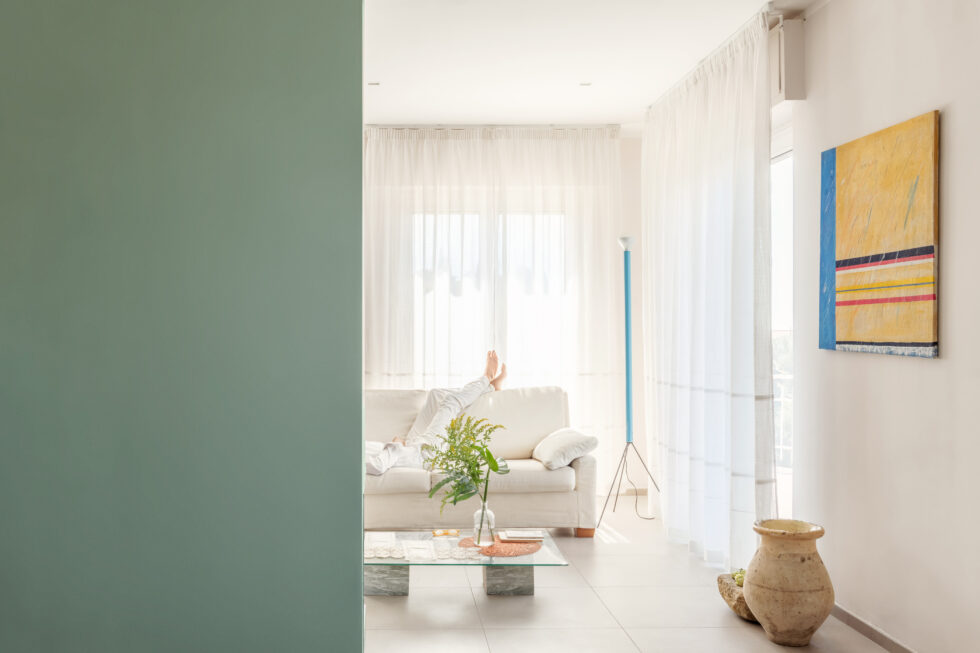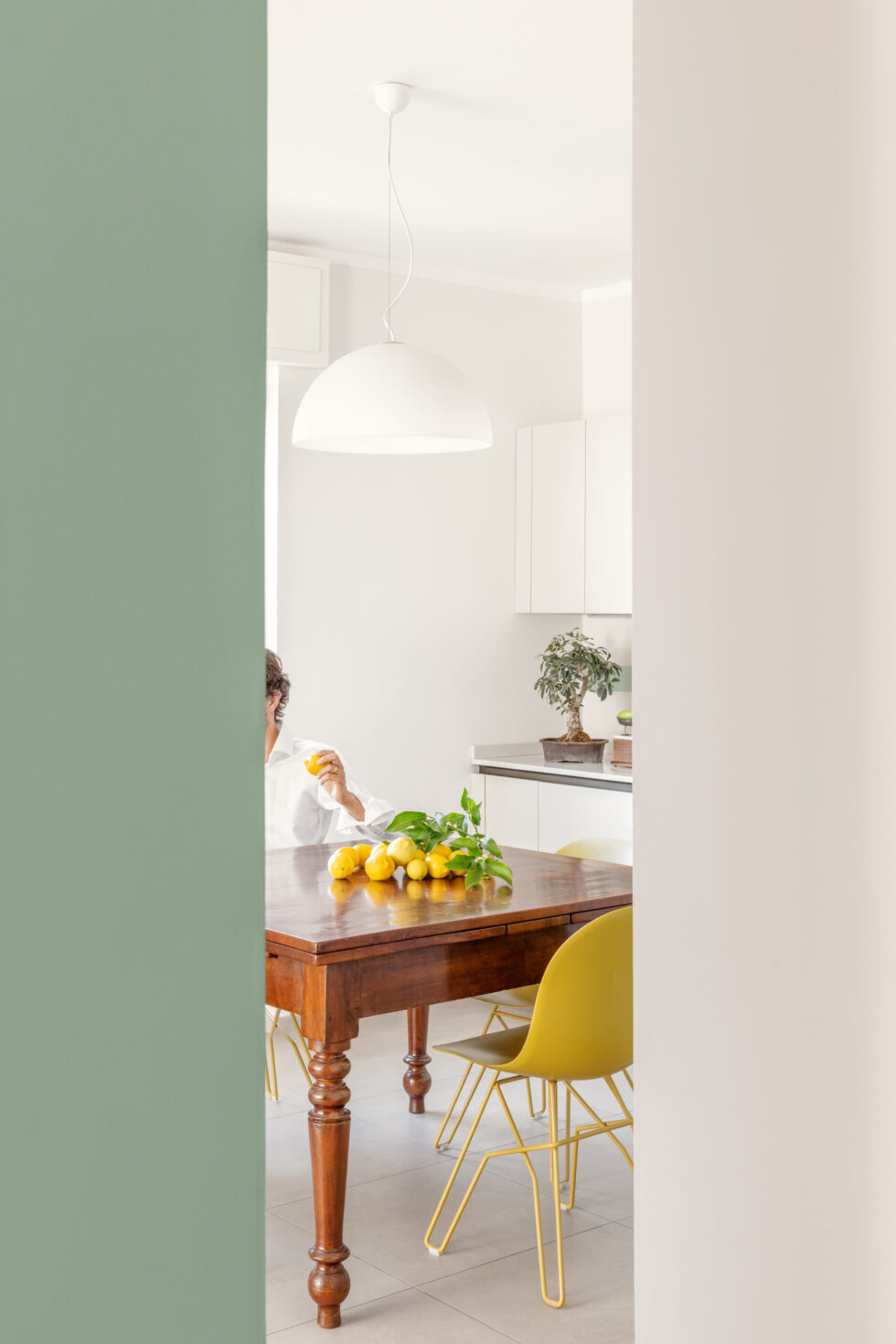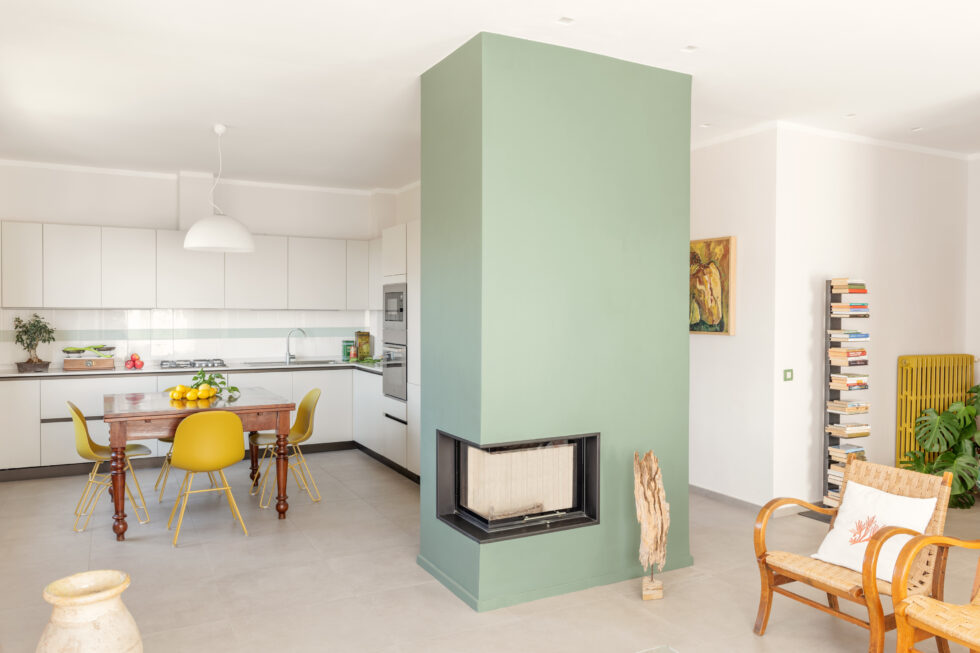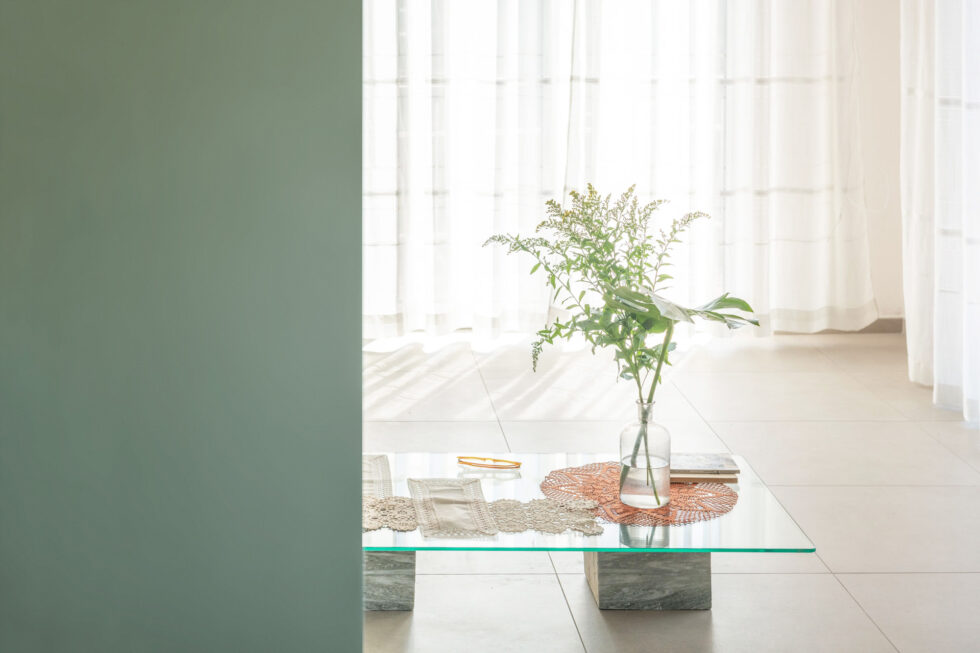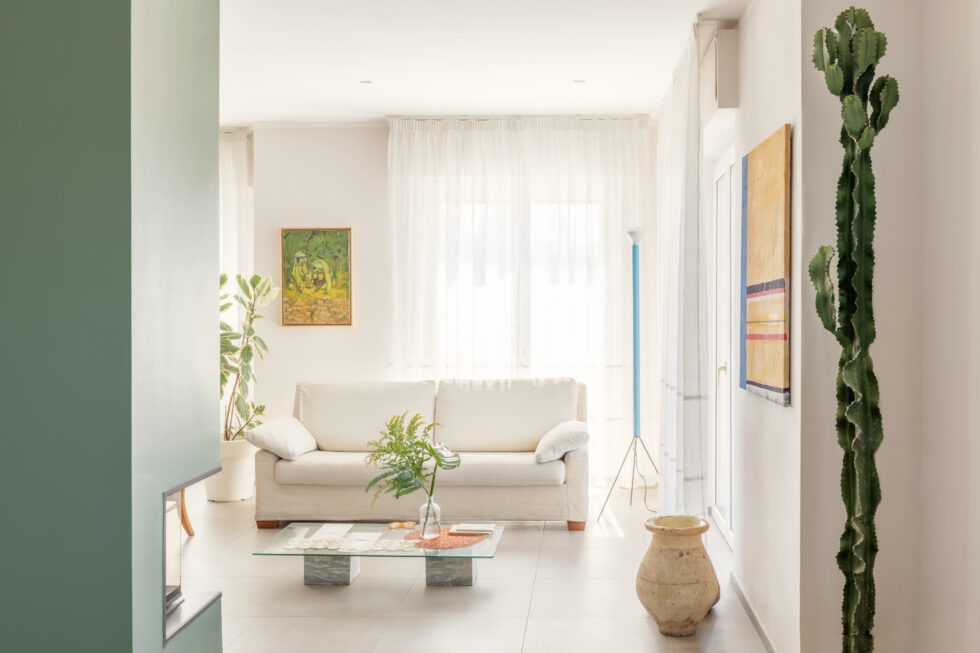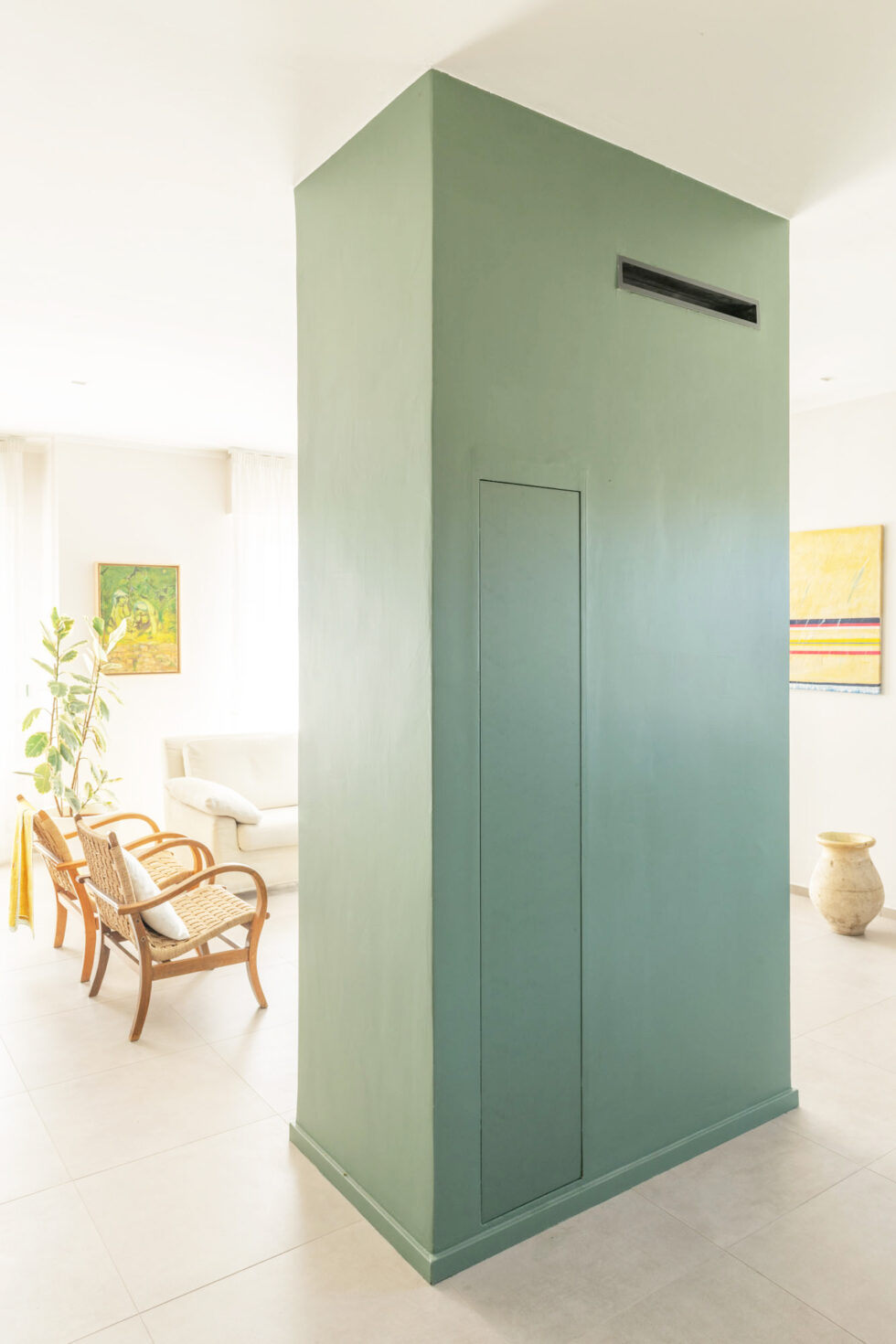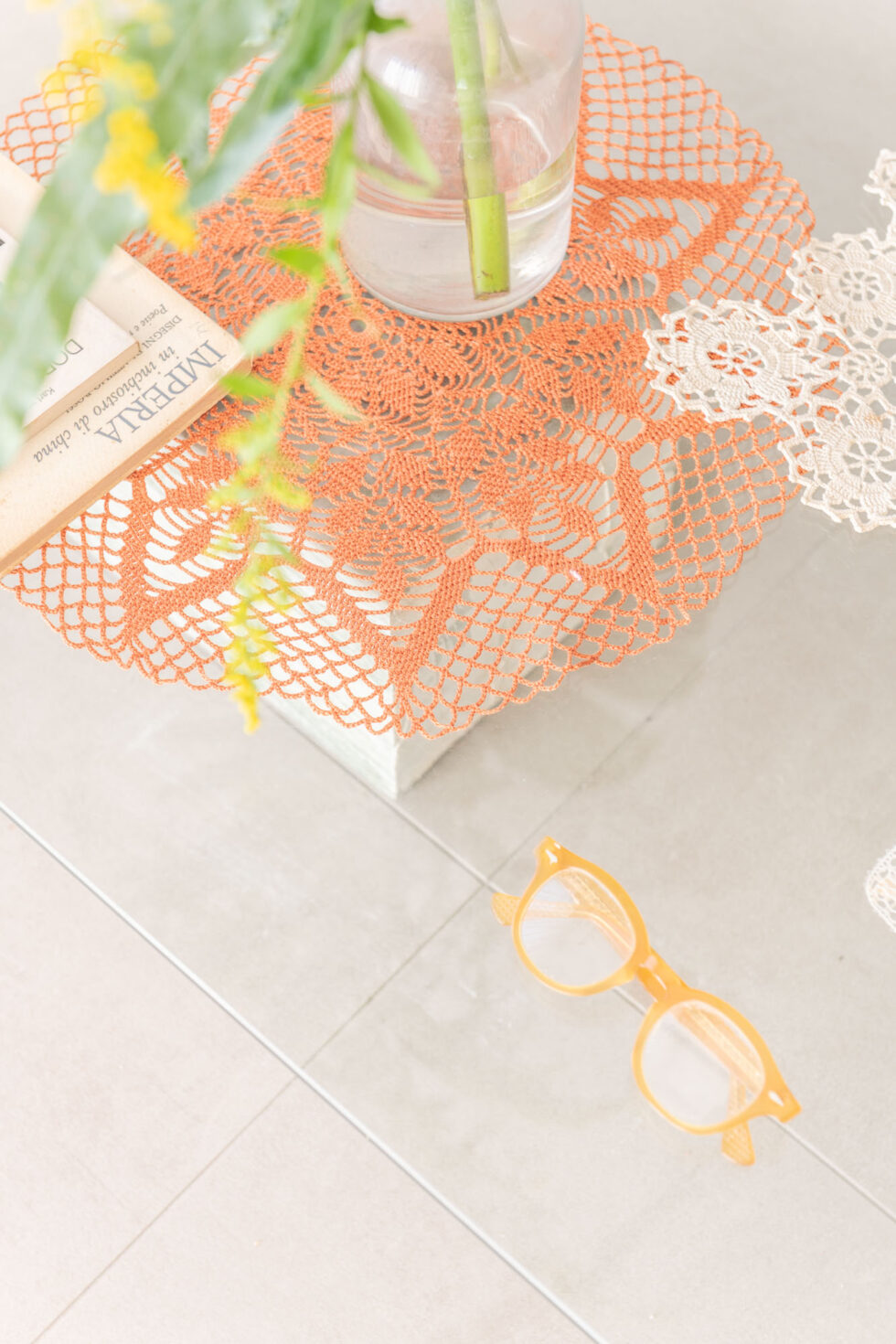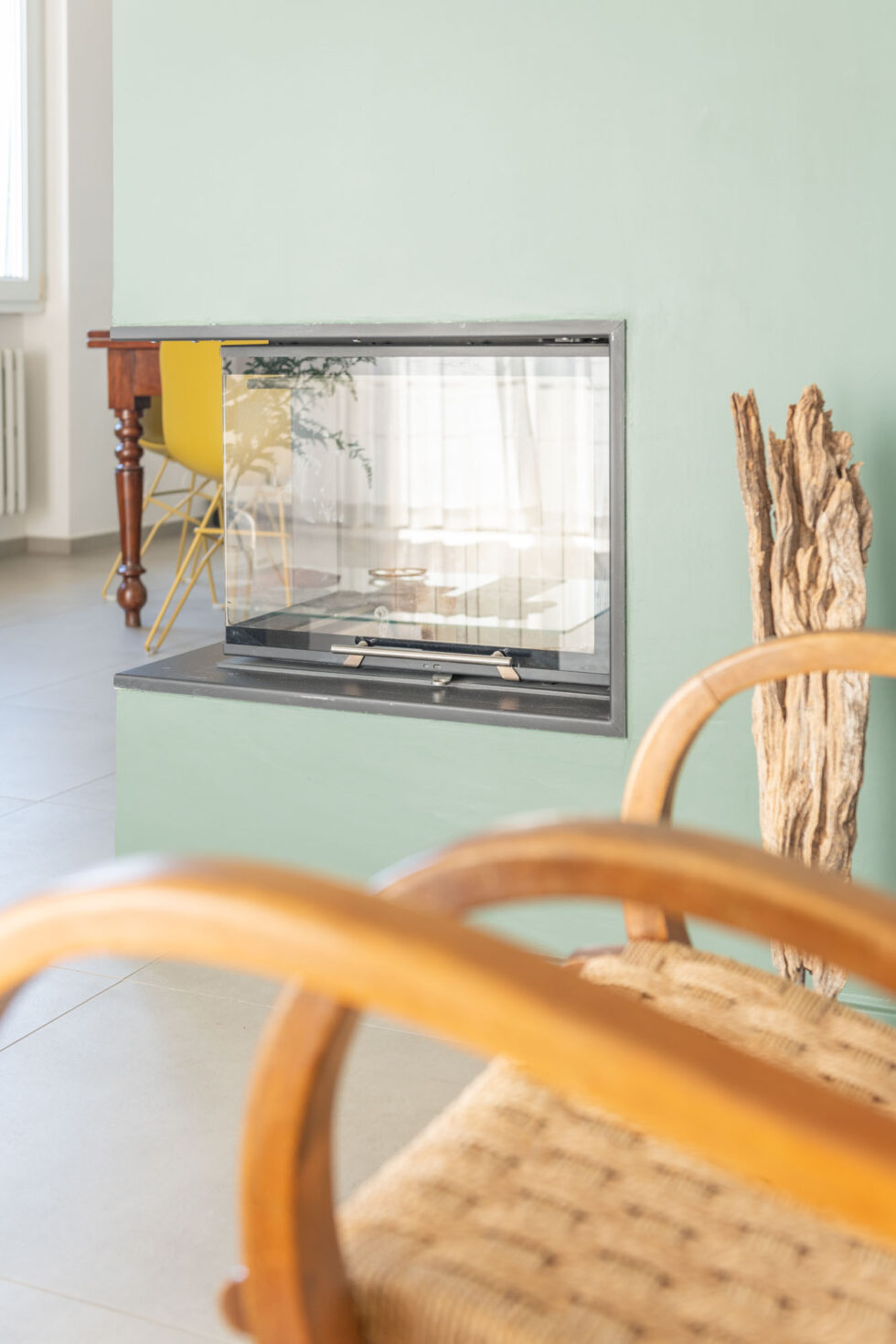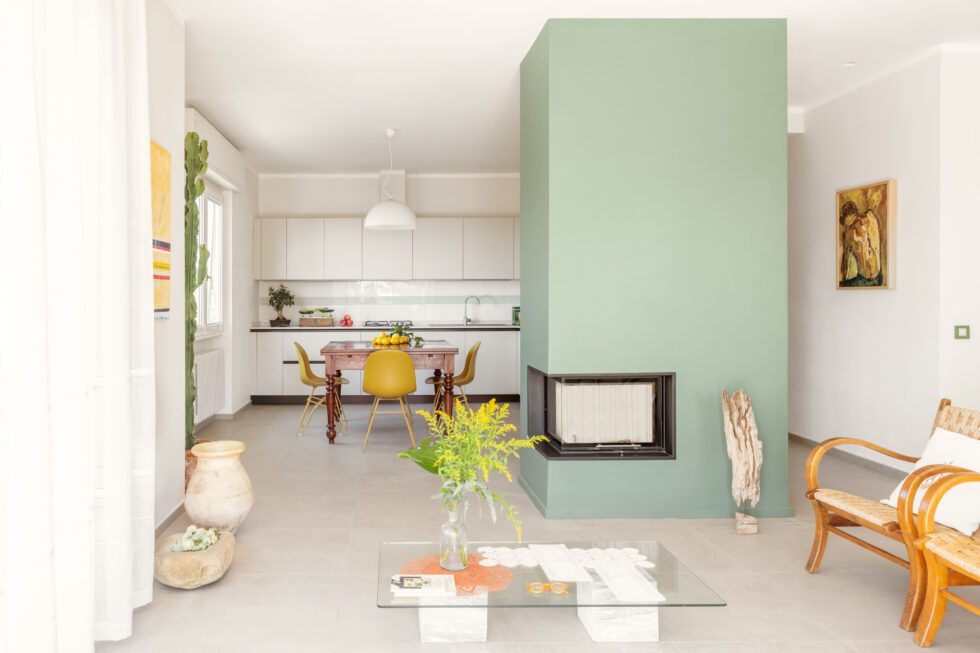Casa Margherita
Imperia / Italy / 2023
Casa Margherita, nestled among the countryside of ancient olive trees on the hills of the Ligurian hinterland, embodies a home tailored for a local family, deeply rooted in the traditions and culture of the region.
Before the renovation works, the kitchen was separated from the living room, and the classic layout of the house, while rigid, hindered its usability and livability. The architect behind this project aimed to merge the two spaces by removing the old dividing partition. This choice was reinforced by inserting a monolith in the central part of the living area, where the double-sided fireplace is located. As soon as one crosses the threshold, it creates intimacy between the two rooms and a playful connection, making the spaces more fluid.
By eliminating boundaries, its presence provides a fixed reference point around which to arrange the few furnishings, resulting in simple yet well-articulated architecture. Previously, the fireplace was isolated in a corner of the living room; now, the beauty of the crackling fire can be enjoyed from both areas, making the apartment familiar and immediately welcoming. Moreover, the thermal aspect has improved as the heat has more freedom to propagate.
The house is bright and clear, with windows offering views of the terraced olive groves and, in the distance, the sea. These natural elements inspired the color choices of the apartment. The minimalist and monomaterial monolith is superficially treated with an intense green resin reminiscent of the color of olive leaves. With the use of this material, the surfaces vibrate with interesting reflections that illuminate the house.
Among the living area spaces is the kitchen, delicate and respectful towards the fireplace. All furnishings pay homage to the typical culture of the area; the cabinets have a color similar to the inner leaf of the olive, a subtle almost silvery green, while the solid antique wood table is a family piece reminiscent of olive tree trunks’ bark. In contrast, the modern chairs, in an acid color, refer to the fruit of the olive, oil.
The relationship between the two elements, chair, and table, is aesthetically harmonious despite the contrasting proportions. The painting by Mario Raimondo, known as “Barbadirame,” a student of Picasso, explicitly recalls the owners’ working origins. Tradition and modernity blend harmoniously; in the living room, a lamp from Flos, an iconic piece chosen in its blue version, recalls the sea where the typical Ligurian bands are reflected.
Casa Margherita
Imperia / Italy / 2023
Casa Margherita, nestled among the countryside of ancient olive trees on the hills of the Ligurian hinterland, embodies a home tailored for a local family, deeply rooted in the traditions and culture of the region.
Before the renovation works, the kitchen was separated from the living room, and the classic layout of the house, while rigid, hindered its usability and livability. The architect behind this project aimed to merge the two spaces by removing the old dividing partition. This choice was reinforced by inserting a monolith in the central part of the living area, where the double-sided fireplace is located. As soon as one crosses the threshold, it creates intimacy between the two rooms and a playful connection, making the spaces more fluid.
By eliminating boundaries, its presence provides a fixed reference point around which to arrange the few furnishings, resulting in simple yet well-articulated architecture. Previously, the fireplace was isolated in a corner of the living room; now, the beauty of the crackling fire can be enjoyed from both areas, making the apartment familiar and immediately welcoming. Moreover, the thermal aspect has improved as the heat has more freedom to propagate.
The house is bright and clear, with windows offering views of the terraced olive groves and, in the distance, the sea. These natural elements inspired the color choices of the apartment. The minimalist and monomaterial monolith is superficially treated with an intense green resin reminiscent of the color of olive leaves. With the use of this material, the surfaces vibrate with interesting reflections that illuminate the house.
Among the living area spaces is the kitchen, delicate and respectful towards the fireplace. All furnishings pay homage to the typical culture of the area; the cabinets have a color similar to the inner leaf of the olive, a subtle almost silvery green, while the solid antique wood table is a family piece reminiscent of olive tree trunks’ bark. In contrast, the modern chairs, in an acid color, refer to the fruit of the olive, oil.
The relationship between the two elements, chair, and table, is aesthetically harmonious despite the contrasting proportions. The painting by Mario Raimondo, known as “Barbadirame,” a student of Picasso, explicitly recalls the owners’ working origins. Tradition and modernity blend harmoniously; in the living room, a lamp from Flos, an iconic piece chosen in its blue version, recalls the sea where the typical Ligurian bands are reflected.

